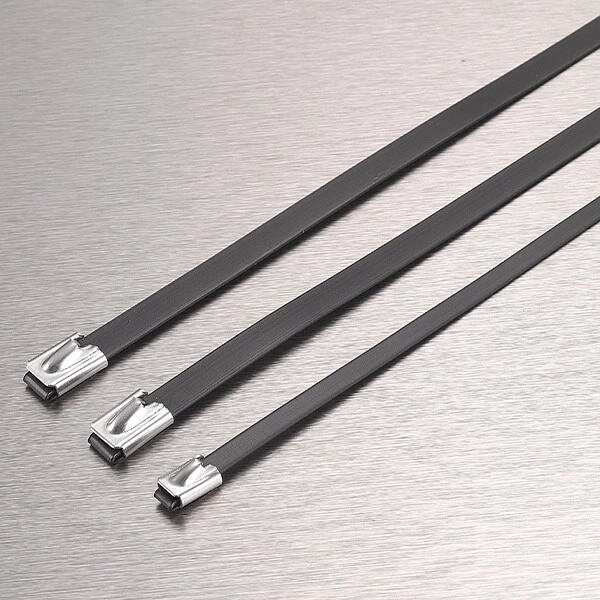Stainless Steel Cable Ties: Functions And Applications
Steel wire ties play a vital role in many industries, particularly in environments requiring high strength, durability, and corrosion resistance. Due to their unique properties, stainless steel cable ties have become an indispensable tool in industry, construction, and everyday life. They effectively bundle and secure various objects, providing reliable support and ensuring a safe and stable work environment.
Stainless steel brings strength and durability
Stainless tie wraps are primarily favored for their strength. In extreme environments, traditional nylon cable ties often break due to excessive pressure or tension. Stainless steel cable ties, however, can withstand higher tensile forces and maintain their hold even under high loads. The strength of stainless steel locking ties makes them an ideal choice for objects that require long-term securement, particularly in high-temperature, high-pressure, or harsh environments.
Stainless steel cable ties' corrosion resistance
This is one of their key advantages over other cable ties. In highly corrosive environments like chemical plants and offshore platforms, plastic or nylon cable ties often corrode, resulting in a short service life. Stainless steel, however, is resistant to oxidation and acid and alkali corrosion, allowing it to maintain its performance even under long-term exposure to harsh environments, significantly extending its service life.
High-Temperature Resistance of Stainless Steel Cable Ties
Steel tie wraps allow for long-term use in extreme temperature environments. They can typically withstand higher operating temperatures than other materials, making them suitable for securing high-temperature or heat-exchange equipment. For example, during the installation of power or industrial equipment, the high-temperature resistance provided by stainless steel cable ties is crucial for ensuring safe operation.
Key Features of Stainless Steel Cable Ties
✔ High strength, capable of withstanding significant pressure and weight
✔ Corrosion resistance, resistant to moisture, salt spray, chemical attack, and oxidation
✔ High-temperature resistance, capable of maintaining stable performance in high-temperature environments
✔ Vibration and shock resistance, capable of withstanding mechanical vibration and shock
Types of Stainless Steel Cable Ties
Different stainless wire ties have different functions. These are the most common:
Flat-Type Stainless Steel Cable Ties
This type of tie has a smooth surface and is suitable for securing applications requiring uniform pressure. It is commonly used for cable management and pipe securing.
Locking-Type Stainless Steel Cable Ties
This type of tie features a built-in locking buckle that prevents release once tightened, making it ideal for applications requiring high-security securing.
Adjustable Stainless Steel Cable Ties
This type of cable tie features an adjustable design, allowing for flexible adjustment of length and securing force, making it suitable for various bundling requirements.
Reasons for Using Stainless Steel Cable Ties
Black metal zip ties are used for a variety of reasons. Their high strength allows them to provide stable support in extreme working environments. Their high temperature and corrosion resistance make them an ideal securing tool for hot and corrosive environments. Stainless steel cable ties also have a long lifespan, ensuring they remain effective even in harsh working environments, reducing the need for frequent replacement. Their ease of installation and stable securing effect make them a widely used securing tool in industries such as industry, construction, and power generation.
How to Choose Stainless Steel Cable Ties
When choosing stainless steel ty wraps, first consider the material. Generally speaking, 304 stainless steel is suitable for ordinary environments, while 316 stainless steel is more suitable for highly corrosive environments. Choosing the right cable tie size is crucial. A tie that is too small will not provide sufficient securing force, while a tie that is too large will result in waste. Therefore, accurate sizing is crucial to ensuring the best securing effect. Tensile strength should also be considered to ensure the selected cable tie can withstand the required pressure and has a good self-locking function, ensuring stability without additional tools. Finally, consider the operating temperature range of the cable tie and select the appropriate high-temperature-resistant cable tie based on the application environment.
Summary
Metal cable tie mounts are widely used in many industries due to their strength, corrosion resistance, and high-temperature adaptability. By selecting the appropriate material and size, stainless steel cable ties can provide a stable and reliable fixing solution for equipment and ensure a long service life in harsh environments.



